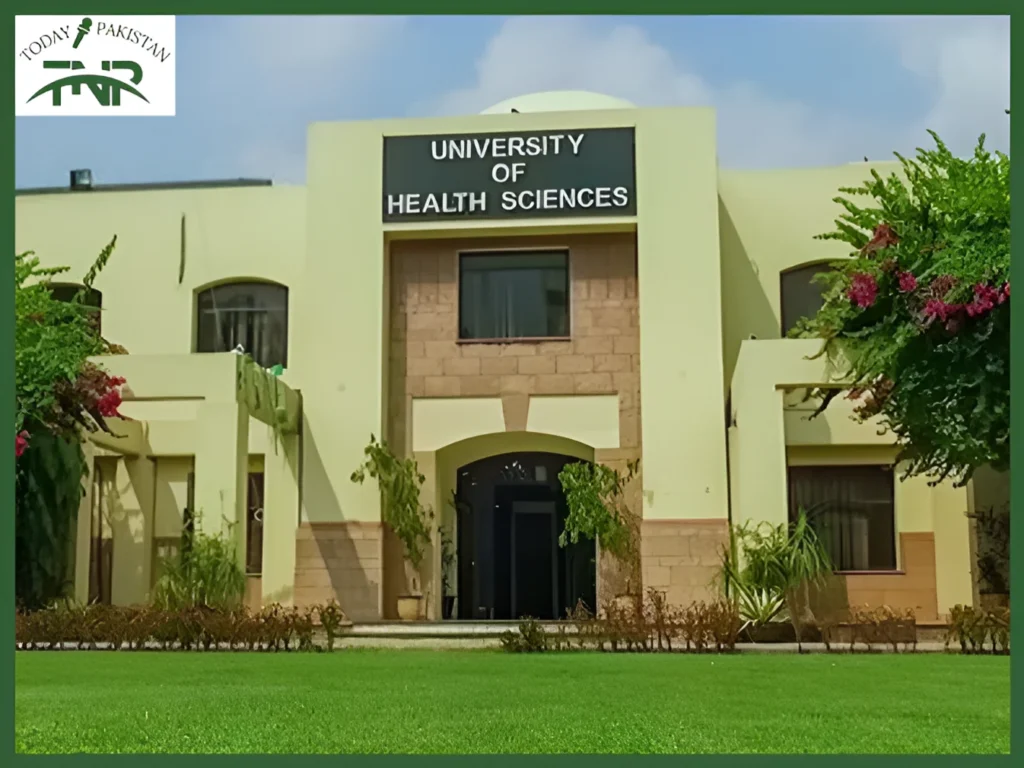
The University of Health Sciences has announced a curriculum overhaul for 1/3- and fourth-year MBBS students. Following the implementation of a modular system for first- and 2nd-year students, the university now plans to increase this system to the later years of the program. This new technique promises to combine theoretical learning with practical application, a shift that many agree with will improve student competence in clinical settings.
Why is UHS Updating the Curriculum?
In a recent meeting chaired through UHS Vice-Chancellor Professor Ahsan Waheed Rathore, numerous main experts in medical education highlighted the want for alternatives. The purpose is to cope with common challenges confronted by medical students:
- Lack of practical exposure during the early years of medical education.
- Difficulty in linking theoretical knowledge with real-world clinical practice.
- Inadequate training in primary healthcare, which is crucial for a strong healthcare system.
By shifting the focus towards more clinical and practical learning, UHS hopes to bridge the gap between textbook learning and patient interaction.
More Clinical Hours for Hands-On Experience
One of the most significant changes in the new curriculum is the increase in clinical training hours. Starting from the third year, students will now get hold of 12 to fourteen hours of medical publicity in keeping with the week. This is a tremendous development in comparison to preceding years, wherein students had limited hands-on experience till a great deal later in their education.
According to Prof Rathore, “This increase in clinical hours will make sure that students not only study the concept but real-world experience in diagnosing and treating patients.”
The idea is to introduce students to clinical settings in advance in their academic journey, giving them extra time to develop essential abilties, including affected patient communication, diagnosis, and treatment planning.
Focus on Family Health and Primary Care
Another crucial addition to the revised curriculum is the emphasis on family health and community medicine. Recognizing the importance of number one healthcare in preventing illnesses and dealing with public fitness challenges, UHS is introducing guides that concentrate on community-based medicine.
This shift reflects a developing attention that doctors need to gain knowledge of not simply to treat individual patients, however also to understand broader health problems that affect whole communities. Students will study:
- Primary healthcare systems, which are essential for reducing the burden on hospitals.
- Family health dynamics, helping them treat patients within the context of their home environments.
- Preventative care, focusing on early detection and public health education.
Modular System for Integrated Learning
The extension of the modular machine to the third and fourth years is another key characteristic of the curriculum update. The modular technique divides the educational 12 months into smaller, topic-focused sections that combine various subjects. For example, a module on cardiovascular fitness may cover the whole thing from anatomy and physiology to clinical remedies and affected person care.
This system now not only allows college students to concentrate on one area at a time however additionally encourages a more holistic knowledge of the way special clinical disciplines are related.
Read More Blogs:
FBISE, LUMS launch Pakistan’s first-ever Mathematics Olympiad
CM Maryam Launches Punjab Honahar Merit Scholarship for Students
Evaluation System Remains, But Focus Shifts to Skills
While the Multiple Choice Question (MCQ) system will hold as a way of assessment, the emphasis will now be positioned on improving college students’ sensible and medical abilties. UHS knows that theory is vital, however the potential to apply that knowledge in actual-world scenarios is what absolutely prepares a medical expert.
Prof Rathore has emphasized that at the same time as college students will still be examined on their theoretical information, the principle cognizance will shift in the direction of making sure they are capable of dealing with realistic demanding situations in a healthcare setting. This move aligns with worldwide developments in medical education, in which abilities-based getting to know is increasingly more prioritized.
How Will These Changes Benefit Medical Students?
The updated MBBS curriculum is designed to create well-rounded medical professionals who are not just knowledgeable but also skilled in patient care. Some key benefits include:
- Better preparedness for real-world practice, thanks to more clinical hours.
- A stronger understanding of primary healthcare, which is vital for managing public health.
- Integrated learning, which helps students connect theory with practice more effectively.
- Improved clinical skills, ensuring graduates are ready to handle patients from day one of their careers.
In summary, the University of Health Sciences is taking a major step towards modernizing medical education in Pakistan. By focusing on practical training, community health, and integrated learning, the university aims to produce doctors who are not only knowledgeable but also capable of delivering high-quality care in both hospital and community settings.
Get Curated Post Updates!
Sign up for my newsletter to see new photos, tips, and blog posts.






